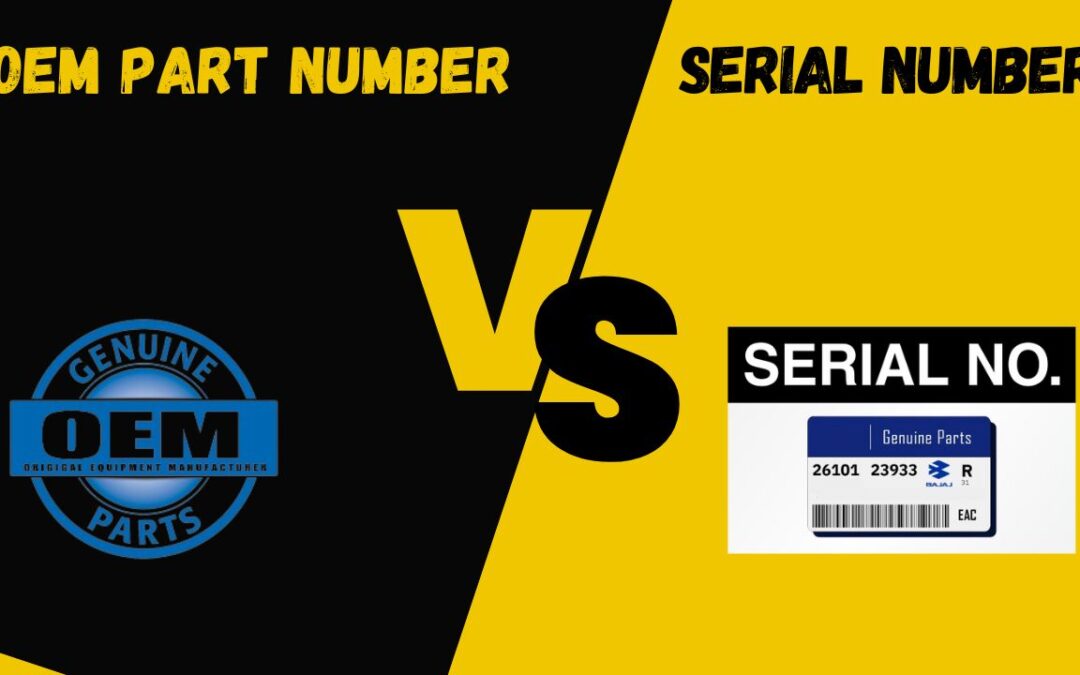In many industries, it’s important to know the difference between OEM part numbers and serial numbers. OEM part numbers are codes given by the manufacturer to different parts. They help with ordering and keeping track of inventory. Serial numbers, though, are unique codes given to each item made. They help with tracking, warranty checks, and quality control.
This article will explain why it’s crucial to understand these two types of numbers. It’ll show how they’re used in making products, maintaining them, and helping customers. By knowing the difference, companies can work more efficiently and keep track of their products better.
What Is The Difference Between OEM Part Numbers and Serial Numbers?
The main difference between OEM part numbers and serial numbers lies in their purpose and function. OEM part numbers are specific codes assigned by manufacturers to identify and categorize individual components or part of a product. These numbers help in ordering, inventory management, and ensuring compatibility with other parts.
On the other hand, serial numbers are unique identifiers assigned to each unit or item produced by the manufacturer. They serve various purposes such as tracking the production process, facilitating warranty validation, aiding in quality control, and enabling product traceability throughout its lifecycle.
In summary, while OEM part numbers primarily denote specific parts or components, serial numbers uniquely identify individual units or items, serving broader functions beyond mere identification.
Can I Use A Serial Number To Find The OEM Part Number?
Yes, in some cases, you can use a product’s serial number to find the corresponding OEM part number. Many manufacturers maintain databases or support services where customers can input a serial number to retrieve associated information, including the OEM part number.
This can be particularly helpful when searching for replacement parts or obtaining technical support. However, not at all manufacturers offer this service, and there may be instances where the serial number alone does not directly provide the OEM part number. In such cases, contacting the manufacturer or consulting product documentation may be necessary to obtain the correct OEM part number for your specific needs.
Are OEM Part Numbers and Serial Numbers Always Unique?
OEM part numbers and serial numbers are usually unique, but there can be exceptions. OEM part numbers are typically assigned by manufacturers to identify specific components or parts within their product lines.
Serial numbers, on the other hand, are unique identifiers assigned to individual products during manufacturing. While efforts are made to ensure uniqueness, errors or overlaps can occur due to various factors such as human error or production issues.
However, manufacturers strive to maintain uniqueness to facilitate accurate product identification, tracking, and warranty management. Its important to note that the uniqueness of these numbers can vary depending on the manufacturer and industry standards.
Do Serial Numbers Change If a Product Is Repaired or Refurbished?
Serial numbers typically do not change when a product is repaired or refurbished. The original serial number serves as a permanent identifier for the product, regardless of any repairs or refurbishments it undergoes.
However, in some cases, manufacturers may append additional identifiers or codes to indicate that the product has been serviced or refurbished. These additional markings help track the history of the product and distinguish it from its original state.
Nonetheless, the core serial number remains unchanged to maintain consistency in product identification and tracking throughout its lifecycle. This practice ensures transparency and accountability in the repair and refurbishment processes.
Are OEM Part Numbers And Serial Numbers Standardized Across Industries?
OEM part numbers and serial numbers are not standardized across all industries. While some industries may adhere to specific numbering systems or conventions for consistency and compatibility, there is no universal standard for OEM part number or serial numbers. Different manufacturers and sectors may use their own unique numbering schemes tailored to their products and operational needs.
However, certain industries, such as automotive and electronics, may have established conventions or guidelines for numbering systems to facilitate supply chain management and product tracking. Ultimately, the standardization of OEM part numbers and serial numbers varies depending on serial numbers depending on industry practices, regulations and the specific requirements of each sector.
Why Do OEM Parts Have Part Numbers Instead of Serial Numbers?
OEM (original equipment manufacturer) parts use consistent part number rather than unique serial number for several key reason:
Part number enables efficient large scale manufacturing and inventory management across high volumes of individual parts only with a common number, suppliers can produce many identical components marked the same way.
Part number also facilitates consistent identification and order fulfilment from inventories containing thousands of different parts. Referring to items by serial number would require tracking uniqueness across a tangled web of one-off parts. Standard part numbers create reliability in searching catalogues and databases.
Also, read our other articles:

